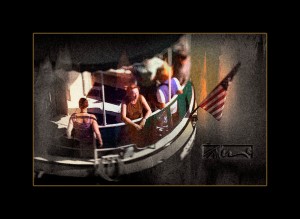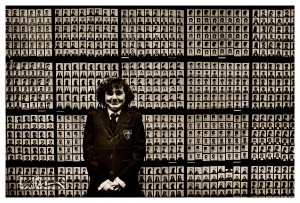It is physically impossible for you to see what anyone else sees. We all have a different perspective.
We all experience the world from that physical and mental space we happen to be in at any given point in time.
Until we can read minds and see through hearts, that physical and mental space in which we exist in any instant is where nobody else can possibly be.
Even two people standing next to each other do not experience the same viewpoint, perspective or event. Two people having the same experience simply can’t happen. Proximity can only yield a possible similarity. I see things from here and you see things from there. When you enter the space I was in, it will likely have changed. Even if it remains the same view, our experiences are different.
But the differences in what we might experience are probably much greater than that. In all likelihood, you and I share little of the same familiarity, understanding, interest, or reaction to the subjects we see. Sharing a ride on a roller coaster, walking down the street or going for a swim in the ocean does not mean we share the same experience. We do not. We rode, we walked and we went for a swim. That is about as close as it gets to sharing the events.
We experience everything in our own unique ways. An experience or encounter is not simply a view through ones eye sockets; it has to do with all of the senses that come into play. The eye is only one of the senses that create the experience. The overall experience of anything within our range of vision relies on mental as well as bodily reactions to the stimulus. This fact makes it even less likely that we can share the experience in the exact same ways as anyone else.
How we see the thing in the view has as much to do with what we already know about it as what we don’t know. It also relies on what portion of the view attracts our focus, what we see first, what we are attracted to, what it brings to mind, where our eye lingers and what we see last.
As photographers, the camera is our tool for capturing the things we see. The image we make with it is our confirmation that we found something we thought was worth imaging. The viewer now must look at what they are shown (the final image) with their own eyes; from their own perspective, and with whatever they might bring to that focus.
While photography has given us the tools to express a new perspective, the very nature of experience means we cannot count on anyone understanding our position completely.
Photography however, seems to be the closest we’ve come to getting a peep through another set of eyes, another mind and possibly into another persons soul.
I cover many photographic topics and techniques in my book. – Great Photography Gift Idea for the Holiday.
Please have a look at some of my other posts here.
NOTICE of Copyright: THIS POSTING AS WELL AS ALL PHOTOGRAPHS, GALLERY IMAGES, AND ILLUSTRATIONS ARE COPYRIGHT © JOHN NEEL AND ARE NOT TO BE USED FOR ANY PURPOSE WITHOUT WRITTEN CONSENT FROM THE WRITER, THE PHOTOGRAPHER AND/OR lensgarden.com. THE IDEAS EXPRESSED ARE THE PROPERTY OF THE PHOTOGRAPHER AND THE AUTHOR.



